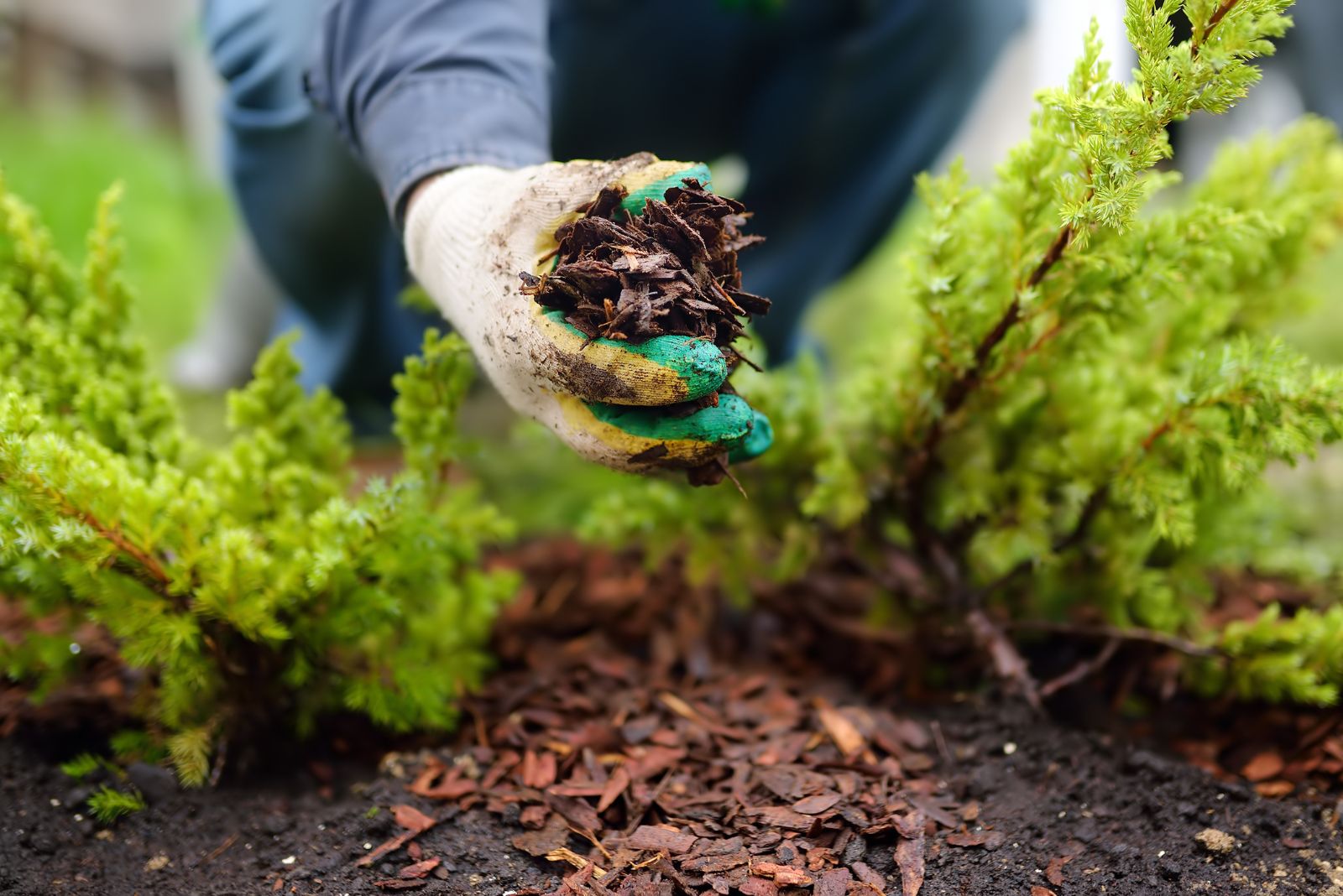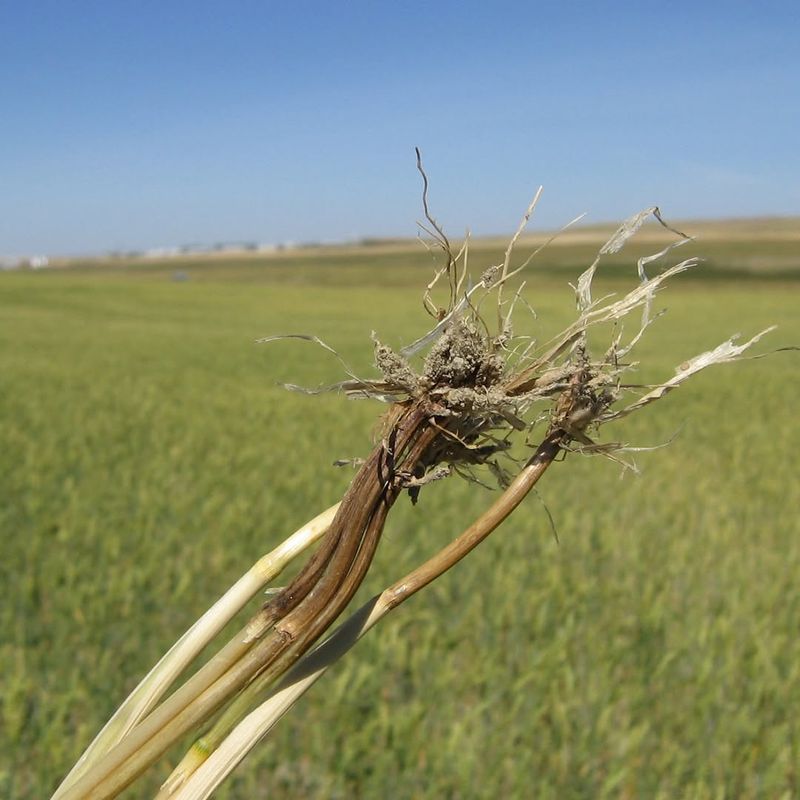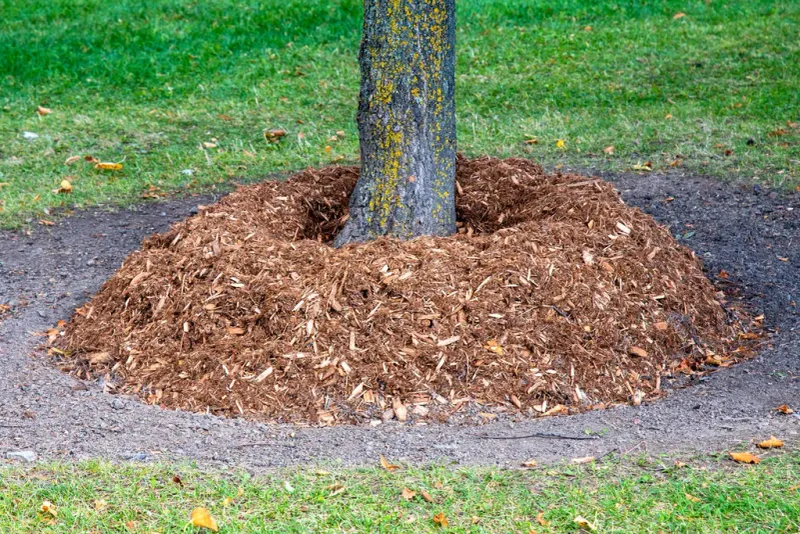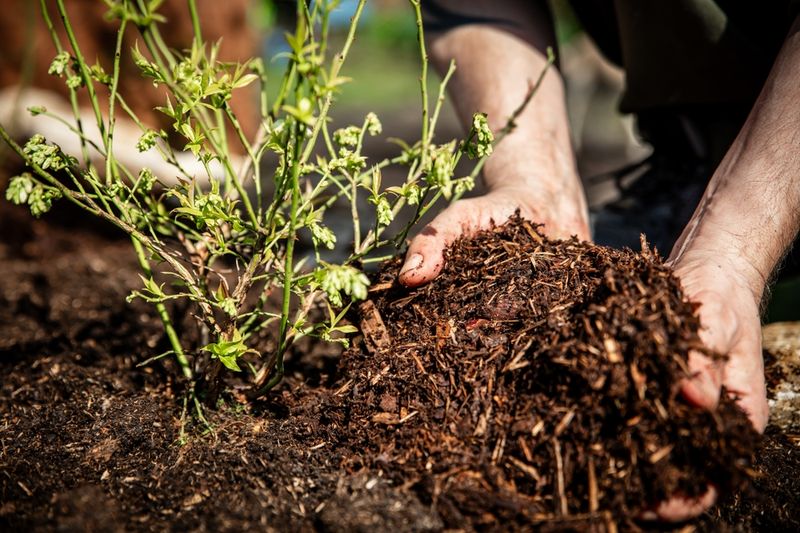Many Michigan gardeners pile on mulch in December thinking more is better, but too much can backfire.
Thick layers can smother roots, trap moisture, and invite rot or disease, turning a helpful winter blanket into a problem.
Mulch pushed against trunks or stems can spell trouble for trees and perennials, while fresh, uncomposted material can steal nutrients from the soil.
Keeping layers modest and leaving space around stems gives plants room to breathe and survive the cold months.
The right approach keeps gardens healthy, protects roots, and ensures plants emerge strong and ready when spring arrives.
The Mistake Is Applying Far Too Much Mulch Or In The Wrong Way
The one mistake Michigan gardeners keep making in December is applying far too much mulch or in the wrong way.
Gardeners pile on mulc, sometimes too thick, too close to plant stems or trunks, or using fresh/unsuitable mulch, thinking it will protect their plants from winter.
But instead of helping, that heavy blanket can suffocate roots, trap moisture, and cause rot or disease.
Crown Rot Becomes A Real Threat
Piling mulch directly against plant stems and crowns creates a moisture trap that stays wet throughout winter.
When snow melts and refreezes repeatedly during Michigan’s unpredictable December weather, that trapped moisture becomes a breeding ground for fungal diseases and rot.
Your plants need their crowns to breathe and stay relatively dry, especially during dormancy.
Crown rot doesn’t show up immediately, which makes it particularly sneaky.
By the time you notice the damage in spring, the rot may have already destroyed the plant’s vital growing points.
Perennials like hostas, daylilies, and ornamental grasses are especially vulnerable to this problem.
The solution is surprisingly simple, keep mulch pulled back at least three to four inches away from the base of every plant.
Think of creating a little donut shape around each stem, leaving the crown exposed to air circulation.
This small adjustment protects the root zone while preventing moisture buildup right where your plant is most vulnerable during Michigan’s freeze-thaw cycles.
Rodent Highways Lead Straight To Your Plants
Thick mulch layers act like cozy superhighways for mice, voles, and other small rodents looking for winter shelter
These creatures tunnel through deep mulch, staying hidden from predators while munching on plant roots, bulbs, and tree bark.
Michigan winters drive rodents to seek protected spaces, and your overmulched garden becomes their perfect hideout.
Voles are particularly destructive because they feed on plant material throughout winter.
They can girdle young trees by chewing bark in complete circles around the trunk, which destroys the tree by cutting off nutrient flow.
Bulbs you planted for spring color can disappear entirely when rodents discover them beneath a thick mulch blanket.
Did you know? A single vole can eat its weight in plant material daily, and they reproduce quickly even during winter months.
Keeping mulch layers to two or three inches maximum makes tunneling less appealing and exposes rodents to natural predators like owls and hawks.
You can also create a mulch-free zone of about six inches around tree trunks and valuable plants to discourage rodent damage.
Delayed Spring Soil Warming Stunts Growth
Excessive mulch acts like a heavy winter coat that your soil can’t take off when spring arrives.
While you want some insulation during December’s coldest days, too much mulch prevents soil from warming up when temperatures rise in March and April.
Cold soil delays root growth and keeps beneficial soil organisms dormant longer than necessary.
Spring bulbs, early perennials, and vegetable gardens all suffer when soil stays cold too long.
Seeds won’t germinate properly, transplants struggle to establish roots, and your entire growing season gets pushed back.
Michigan’s growing season is already short enough without adding extra delays caused by overmulching.
A four to six-inch mulch layer might seem protective, but it’s actually counterproductive.
Soil microbes need to wake up and start breaking down organic matter to feed your plants.
Earthworms need warmer conditions to become active and improve soil structure.
Keeping mulch to a reasonable two to three-inch depth provides winter protection while allowing soil to respond appropriately to seasonal temperature changes that signal spring’s arrival.
Volcano Mulching Suffocates Tree Roots
You’ve probably seen it everywhere: mulch piled high against tree trunks in a cone shape that looks like a miniature volcano.
This common practice is actually one of the worst things you can do to trees, yet it happens in yards across Michigan every December.
Trees need their root flares exposed to air, not buried under suffocating mounds of mulch.
Volcano mulching causes multiple problems simultaneously.
Buried bark stays constantly moist, inviting disease and insect damage.
Roots may begin growing upward into the mulch instead of spreading properly through soil.
The tree’s natural defenses break down when bark tissue that should be above ground gets covered.
Young trees are especially vulnerable and may never develop properly.
Professional arborists strongly recommend the proper technique: spread mulch in a flat, even layer that extends outward from the trunk, not upward against it.
Imagine creating a mulch pancake rather than a mulch volcano.
Keep that three to four-inch gap around the trunk clear, and extend your mulch circle as wide as the tree’s canopy if possible.
Your trees will reward you with healthier growth and fewer problems.
Matted Mulch Blocks Essential Water And Air
Certain mulch materials, especially fine-textured ones like shredded hardwood, can mat together when applied too thickly.
Michigan’s wet December weather combined with snow weight compresses mulch into a nearly impenetrable barrier.
Water can’t soak through properly, and air circulation to soil and roots gets severely restricted.
When spring rains arrive, you might notice water pooling on top of matted mulch instead of soaking down to plant roots.
This creates drought stress even during wet weather because moisture never reaches the root zone.
Meanwhile, beneficial oxygen can’t penetrate the compacted layer, and soil beneath becomes anaerobic, which harms roots and soil life.
Fresh mulch applied in December is particularly prone to matting because it hasn’t had time to settle naturally.
Avoid this problem by using coarser mulch materials like wood chips or shredded bark in moderate amounts.
If you already have mulch from earlier seasons, just add a thin one-inch layer rather than piling on several inches.
Occasionally fluffing mulch with a rake helps maintain proper texture and prevents that problematic matting effect throughout winter months.
Nutrient Imbalances Weaken Plant Health
Fresh wood mulch breaks down slowly, and during that decomposition process, soil microorganisms consume nitrogen from the surrounding soil.
When you apply thick layers of fresh mulch in December, you’re potentially setting up a nitrogen shortage that will affect plants the following growing season.
Michigan’s cold temperatures slow decomposition during winter, but the process continues and intensifies as soil warms.
Nitrogen deficiency shows up as yellowing leaves, stunted growth, and poor plant vigor.
Vegetables, annuals, and even established perennials can suffer when competing with decomposing mulch for available nitrogen.
The problem worsens with excessive mulch depth because more material means more microbial activity drawing nitrogen from soil.
Smart gardeners compensate by using aged or composted mulch rather than fresh wood products.
Alternatively, apply a light nitrogen fertilizer before mulching, or simply keep mulch layers thin enough that nutrient tie-up remains minimal.
Remember that mulch benefits soil in the long run as it fully decomposes, but the short-term nitrogen competition can stress plants if you’re not mindful about application depth and timing during December’s critical preparation period.








